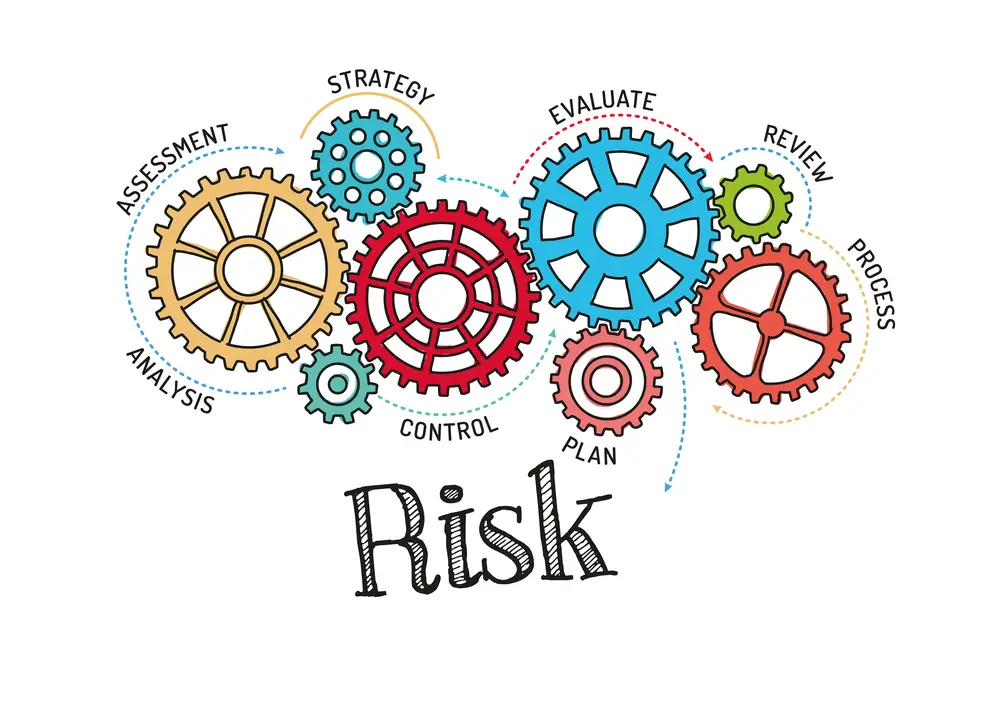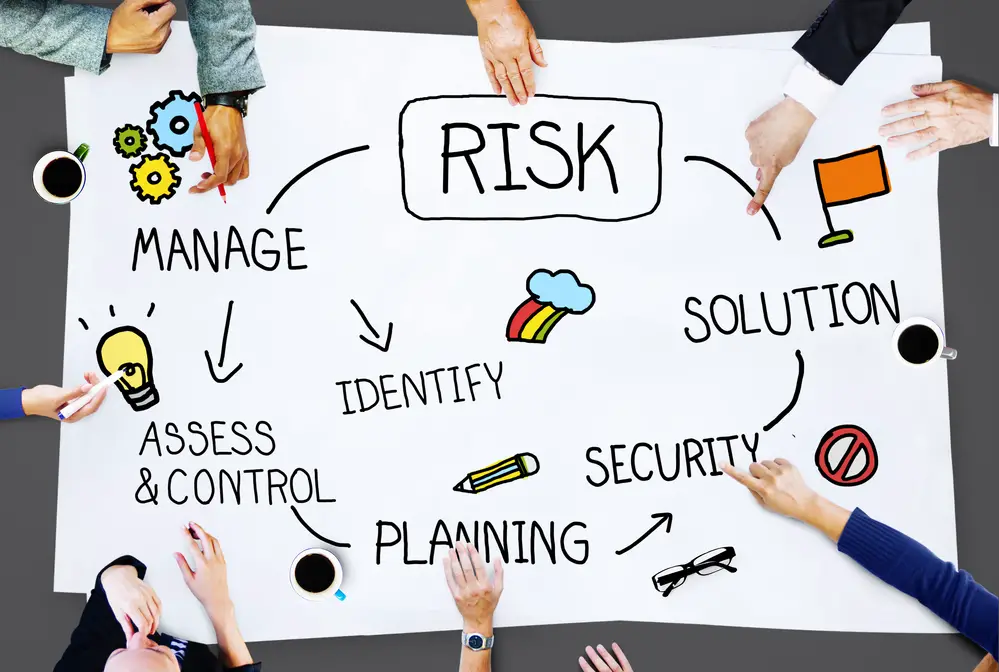The duties of a Risk Manager include identifying, assessing, and evaluating potential risks in an organization basically the overall risk management process. They must develop methods to reduce or mitigate potential risks and ensure that preventive measures are in place.
A Risk Manager must also create policies and procedures for dealing with enterprise risk management issues and regularly review existing plans and procedures. They must also stay up-to-date on relevant laws and regulations regarding risk management. The Risk Manager is ultimately responsible for helping an organization protect its assets and maintain compliance with applicable laws.
Risk management is a critical component of any organization, and risk managers are the professionals responsible for managing risks. They are often the unsung heroes that work tirelessly to ensure their organization can operate as safely on health and safety measures effectively as possible. In this blog post, we’ll take a closer look at what risk manager does and how they can help an organization achieve its goals.
Identifying Risks
A key part of a risk manager’s job risk management duties is to identify potential risks that could affect the company. This includes everything from natural disasters to regulatory changes to financial mismanagement.
Risk managers must monitor the external environment to anticipate any potential risks or opportunities that may arise. They must also be able to evaluate internal processes and procedures to identify areas where gaps or weaknesses need to be addressed.
Developing Strategies
Once potential risks have been identified, it is then up to the risk manager to develop strategies for mitigating them. This can include creating effective policies and procedures, as well as developing contingency plans for responding quickly in the event of an emergency situation.
The risk manager must also be able to communicate these strategies clearly and effectively so that everyone in the organization understands how they should act to minimize potential losses or damage due to unforeseen events.
Managing Risk
Once identified risks, it is up to the risk manager to develop strategies for mitigating them. This includes developing contingency plans in case something goes wrong and working with other departments within the organization to reduce risk exposure in line with internal and external auditors.
Risk managers must also stay abreast of changes in regulations and industry best practices so that they can ensure their company remains compliant with all applicable laws and regulations. Additionally, they must be able to communicate these changes throughout the organization so that everyone is aware of them.
Risk managers also develop business continuity plans for significant risks and most significant risks, risk factors are monitored through frequent risk assessments. Risk awareness is also a risk manager risk management roles.
Monitoring Performance
Risk managers don’t just identify and manage risk; they also monitor performance against targets set by the organization. This means regularly reviewing operational performance, customer satisfaction, and financial performance data. To make sure the company is meeting its goals and objectives. If not, then it’s up to the risk manager—in conjunction with other departments—to figure out why and develop strategies for improvement if necessary.
Role of Risk Manager
Risk managers plays a vital role in any organization, helping to ensure that potential risks are identified, assessed, and monitored. They act as a bridge between the management team and operations staff, ensuring that the process of risk prevention is followed properly.
Risk managers must be highly efficient at evaluating costs versus benefits, ensuring companies maintain compliance with applicable law and industry standards, and have access to resources to handle unanticipated events.
Additionally, they must be able to identify any causes of financial instability, losses, or liability related to unplanned events while also staying up-to-date on best practices regarding risk management or corporate governance processes.
With ever-increasing environmental complexities dictating the speed and accuracy of their work, having a competent risk manager will greatly reduce the level of uncertainty businesses face in today’s marketplace.
Risk managers have a responsibility to communicate risk strategies and systems within organizations. Develop and test real-world risk models incorporating market and economic risk, assure effective operations, and support studies and analyses. Risk managers need a great quantitative and analytical aptitude.
Risk Managers must analyze the risk to be handled within an organization. They assist organizations in analyzing risks that affect business success, creates strategies to manage business risks, and ensure effective continuity. Risk managers’ jobs can help run successful businesses.
Risk management is rapidly developing. Major graduate companies offer an increased opportunity for graduate training to specialize and train in this function. This is particularly true within the banking and financial markets sectors, which are retaining more employees.
Risk management is employed in public organizations, charities, and private organizations. Occasionally, small businesses perform risk management tasks for the financial or operations department.
Qualifications
Becoming a successful Risk Manager requires being adequately prepared for the task. Those interested in the role should ensure they have at least a bachelor’s degree and experience in finance and risk management.
Additionally, Risk Managers need to be analytical problem solvers who are comfortable with numbers and able to identify potential risks of any sort. As Risk Managers work closely with stakeholders across business functions, strong written and verbal communication skills are key.
An essential quality a Risk Manager must possess is the ability to provide proactive solutions that align with the organization’s risk objectives. This role involves staying up to date on industry news and practices, so managing time effectively and having the capacity to implement corrective action plans are also critical qualities necessary to succeed in this field.
A postgraduate qualification is not essential but can provide valuable knowledge, particularly when you study a non-related subject. Various universities offer master’s degrees to manage risk. The course covers Risk Management mainly or mainly focuses on specific areas such as business / financial / health & safety Risk Management, risk, and emergency disaster recovery.

Work experience
The work experience of a Risk Manager is highly varied and depends on the size and type of organization they are employed in. Generally, a Risk Manager will possess a degree in risk management or a related field, along with certification to demonstrate their expertise. They may have several years of experience as an internal auditor, compliance officer, or other risk management role.
A Risk Manager should also have strong analytical and organizational skills, be able to think critically, and make sound decisions quickly. Additionally, they should have good communication and interpersonal skills to be successful in this role.
A Risk Manager must understand numerous disciplines, such as financing, accounting, marketing, and law. Most Risk Managers come from business management or finance-related backgrounds and often have experience in many aspects of risk management.
Having a well-rounded understanding of various risks can lead to an unparalleled ability to thoroughly understand the strengths and weaknesses associated with different types of risk. Furthermore, risk managers must learn lifelong since their job constantly evolves as technology changes.
Employers are seeking experience in risk administration. For an opportunity to expand your experience, one year’s industrial work is included in your course, and one-year internships can be done.
The placements give you practical experience and help develop connections that will benefit your future career choices. Experience in a specific industry, such as finance, could help you get into what you want to specialize in. Explore the different kinds and types of internships available.
Risk Manager – Job Description
The Job Description of a Risk Manager includes overseeing the organization’s risk management process, monitoring and analyzing key risks, communicating with stakeholders regarding risk assessment and management activities, developing strategies to identify, assess, and manage risks, evaluating existing policies and procedures for risk management and ensuring the organization is in compliance with regulatory requirements.
The Risk Manager should also possess knowledge of financial models, portfolio analytics, investments, and other related topics. They will monitor the organization’s financial performance against industry benchmarks and track corporate developments that may affect the organization’s risk profile.
A successful Risk Manager must have excellent communication skills, be organized, and be able to work independently and as part of a team.
The risk manager’s main responsibility includes collecting information about organizations’ risk levels. Risk managers will analyze key risk indicators and conduct what-if analyses to determine whether a particular risk identified by the process is imminent. There is also a job description template available to follow.
Other issues include the loss of confidential information from organizations or their assets. Risk managers also help implement controls and actions that safeguard assets and resources.

Educational requirements and training requirements
The Educational requirements for a Risk Manager typically include a degree in risk management or a related field, such as economics or finance. Certifications, such as Certified Risk Management Professional (CRMP) or other professional risk management certifications, may also be required to demonstrate expertise and proficiency in the role.
Additionally, for Risk Managers to be effective, they must have extensive training in various topics such as financial models, portfolio analytics, investments, and other related topics. They must also possess strong analytical skills with the ability to think critically and make sound decisions quickly.
To get started in Risk Management, typically a degree in – In addition to having a degree in all three areas, it is important to know a variety of business and risk management fields. These jobs require considerable experience in Risk Management positions. Risk managers need the skills and experience required in the IT and engineering fields. Risk management is important to risk managers as others may overlook risk.
What does a risk manager do on a daily basis?
A Risk Manager’s daily activities include monitoring and analyzing key risks, communicating with stakeholders regarding risk assessment and management activities, developing strategies to identify, assess, and manage risks, evaluating existing policies and procedures for risk management, and ensuring the organization is in compliance with regulatory requirements.
They must also stay updated with industry trends and developments affecting the organization’s risk profile. In addition, they need to monitor the organization’s financial performance against industry benchmarks and adjust risk as necessary. They should also take appropriate actions to mitigate risks when needed.
Credit risk managers are responsible for designing and implementing credit risk models that assess the risks that exist to the business and take the appropriate measures to mitigate them. Defines credit risk tolerances for an organization. Daily monitoring.
Conclusion
A risk manager plays an important role in any organization by identifying potential risks and developing mitigation strategies. They also monitor performance against targets set by the organization to ensure that these targets are being met or exceeded regularly. For organizations looking for someone who can help ensure their success through effective risk management practices, hiring a qualified risk manager should be a top priority!

Chris Ekai is a Risk Management expert with over 10 years of experience in the field. He has a Master’s(MSc) degree in Risk Management from University of Portsmouth and is a CPA and Finance professional. He currently works as a Content Manager at Risk Publishing, writing about Enterprise Risk Management, Business Continuity Management and Project Management.


